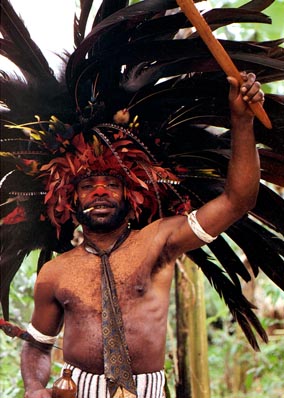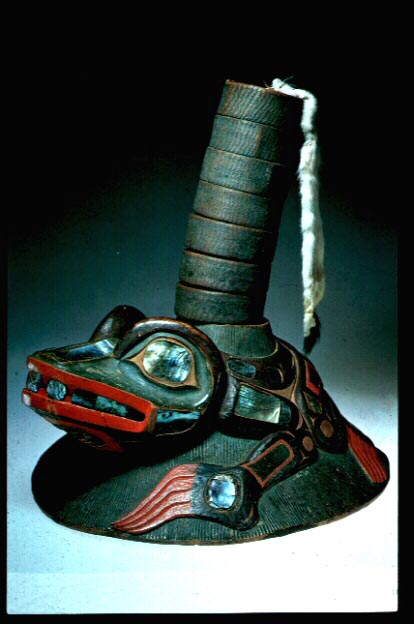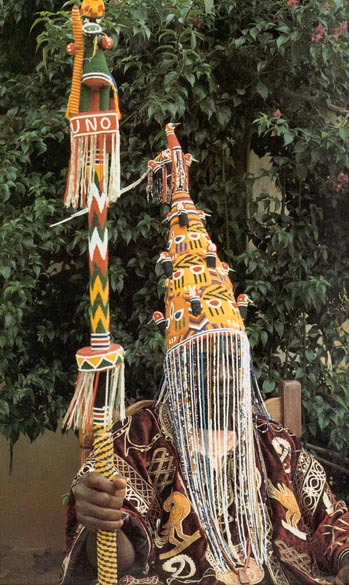| The Wealth and
Status Connection The headgear shown below are worn by very important people in their respective societies. These items are of great significance to their owners, and put their wearers into a class of their own. Here we have objects from the people of the New Guinea Highlands, the Yoruba of Nigeria and people of the Northwest Coast. Through looking at the context of display for the headgear in all three cultures, I hope to give the viewer a better understanding of their meaning. Each of these objects has a specific function in its own group. |
||
 |
 |
 |
| Papua
New Guinea. Wahgi Highlands. Man wearing plumed wig for the Sekata Pig Festival.
20th century. Photograph by Michael O’Hanlon 1979. (Picture Source: O’Hanlon 1993, plate 7 ) The Waghi live in the Eastern highlands of New Guinea. Wahgi men and woman wear elaborately decorated wigs for the pig festival. Before the Waghi display their wigs in public, they first make sacrificial services to bless the wigs and the wig wearer. This hat is made from plumes, which are usually imported and very expensive. You can find many different plumes from exotic birds on this wig. Because of the cost of the wig, we can see that the Wahgi economy was booming during the 1970’s thanks to the increasing revenue from coffee |
North America. Northwest Coast. Tlingit. Chief's hat. Wood, copper, brass. H. 44cm. 19-20th century. (Picture Source, Furst & Furst, cover) NWC chiefs are very wealthy and wear such hats as representative of their wealth and high status. A Tlinglit crest animal, the frog, surmounts this chief's hat to protect its wearer. The frog is a very powerful image for the Tlinglit people. This particular hat is surmounted by seven basketry rings said to indicate the number of times it had been publicly validated.
|
Nigeria, Yoruba,
Ila-Orangun. Beaded Crown. 19th-20th century. (Picture Source: Drewal, Pemberton, and Abiodun, plate 37) The Yoruba beaded crown is the most important symbol of Yoruba kingship. The crown is a carefully constructed cone of beads with a fringe that covers the wearer's face. The purpose of the crown is to eliminate the individuals’ personality and to supplant it with the divine power of the dynasty. The crown itself is the symbol of the king's magic power and his immunity to attack. Its conical shape represents the great amount of power that is given to the right wearer. If a usurper wears the crown, the power of the crown would destroy them. The feathers projecting from the top are from the royal bird known also as the okin bird. The interlace pattern represents leadership. The face on the front is said to be the face of Oduduwa. |
| IrThe Costume Connection | Impact of European Culture | Art of Music |
| The Container As Woman | DSpirits Take Form | Connections through Architecture |
| Home | Comments on Wealth & Status Connection |
General Comments |